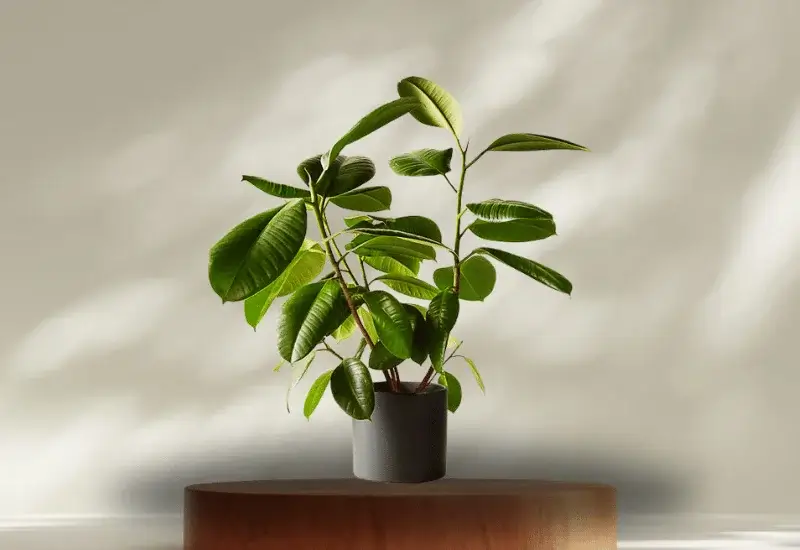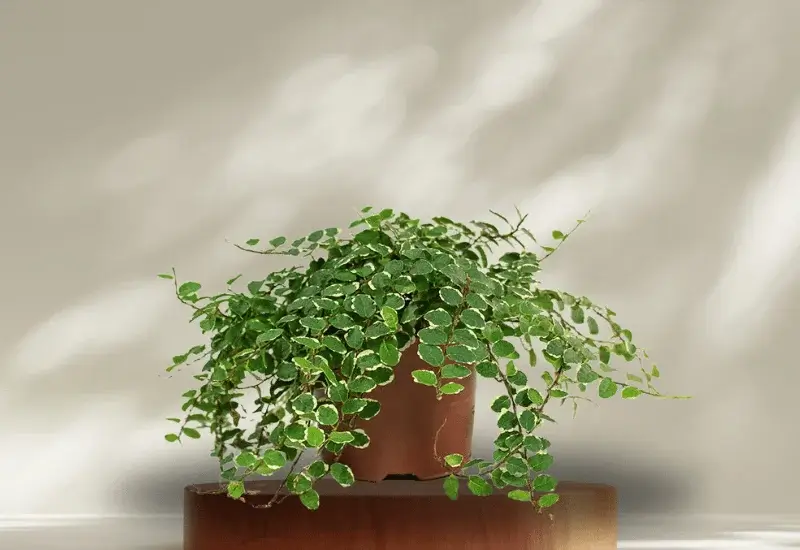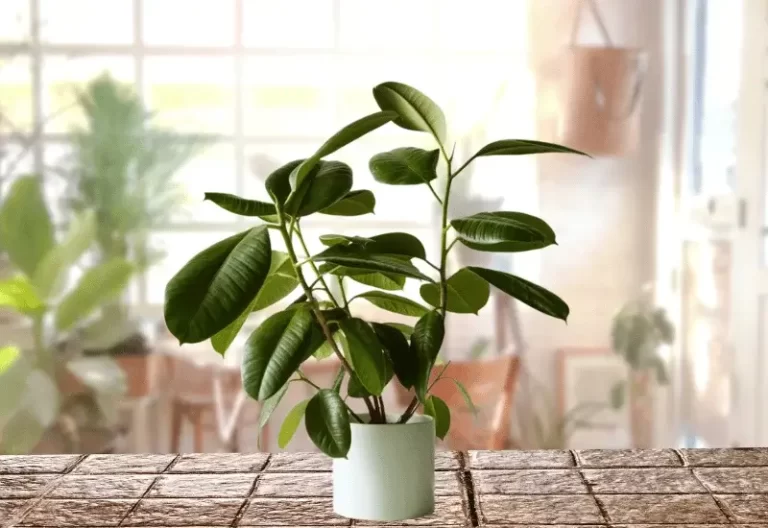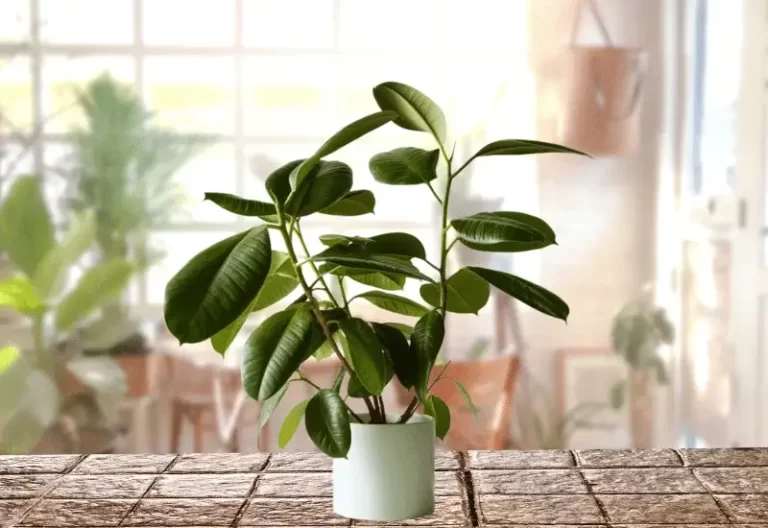Care and Growth for Ficus Plant or ficus Tree
The ficus, whether as a potted ficus plant or a towering ficus tree, is a captivating addition to any indoor or outdoor space. Known for its lush, glossy foliage and versatile adaptability, the ficus plant family offers a wide range of species, each with unique charm. These elegant plants can thrive in diverse environments, making them a popular choice for novice and experienced gardeners.
Importance and popularity of Ficus in horticulture
Ficus plants have gained immense popularity in horticulture for several compelling reasons. Their striking appearance, ranging from lush green leaves to intricate trunk structures, makes them an attractive addition to indoor and outdoor gardens. Ficus plants are also valued for their air-purifying abilities, helping to create healthier living spaces.
Beyond their aesthetic appeal, Ficus plants hold cultural significance in various parts of the world and are often used in religious rituals and ceremonies. Their adaptability to different climates and environments further adds to their importance, making them accessible and beloved by plant enthusiasts of all experience levels.
| Common Name | Ficus Plant |
| Genus | Ficus |
| Family | Moraceae |
| Native Regions | Tropical and subtropical regions |
| Climate Preferences | Warm and humid climates |
| Light Requirements | Bright, indirect sunlight |
| Soil Preferences | Well-draining, slightly acidic |
| Watering Needs | Allow top soil to dry between waterings |
| Maintenance | Pruning, shaping, and repotting |
| Special Features | Air-purifying properties |
| Cultural Significance | Varied, including religious and traditional symbolism |
| Common Varieties | Ficus benjamina, Ficus lyrata, Ficus elastica, Ficus microcarpa, Ficus pumila |
Taxonomy and Classification for Fiucs plant and tree
Genus: Ficus
The Ficus plant belongs to the genus Ficus, a part of the more prominent Moraceae family. This genus encompasses various species, each with unique characteristics and attributes. Ficus plants are known for their diversity, some being towering trees while others are compact shrubs, making them versatile for various landscaping and indoor decoration.
Family: Moraceae
Ficus is a member of the Moraceae family, commonly referred to as the mulberry family. This plant family is renowned for its economic and ecological importance. Aside from Ficus, it includes several other notable plants like mulberries, breadfruit, and osage-orange. Moraceae family members are characterized by their milky sap and often exhibit a variety of growth forms and leaf shapes.
Common species and varieties
Within the Ficus genus is a remarkable diversity of species and cultivars. Some of the most common Ficus species and varieties include:
Ficus benjamina (Weeping Fig)

Recognized for its elegantly drooping branches and small, glossy leaves, this indoor favorite is prized for its ornamental value.
Ficus lyrata (Fiddle-leaf Fig)

Notable for its large, violin-shaped leaves, the fiddle-leaf fig has gained immense popularity as a statement piece in interior design.
Ficus elastica (Rubber Plant)

This species features thick, rubbery leaves in various shades of green. It’s well-regarded for its air-purifying properties and durability.
Ficus microcarpa (Indian Laurel Fig)

Often used for bonsai cultivation, this species has small, dense foliage and can be trained into intricate forms.
Ficus pumila (Creeping Fig)

As a versatile ground cover or climber, this species has small, heart-shaped leaves and is known for its ability to scale walls and structures.
These are just a few examples of the diverse Ficus species and varieties, each offering unique characteristics that cater to different tastes and preferences in horticulture.
Morphology and Growth Habit for ficus plant or tree
Leaves
1. Shape and size
Ficus plants exhibit a remarkable diversity in leaf shapes and sizes. Leaves can range from minor and elliptical to large and deeply lobed, depending on the species or variety. Some Ficus species, like the Ficus lyrata, boast large, violin-shaped leaves, while others, such as Ficus microcarpa, have smaller, lance-shaped leaves.
2. Color and texture
Ficus leaves are typically shades of green, ranging from dark, glossy green to lighter, matte green. The texture of the leaves also varies, with some species having smooth and shiny leaves while others have leaves with a more textured or matte surface.
Trunk and stems
1. Bark
The bark of Ficus plants can also differ between species. In some Ficus varieties, the bark is smooth and gray; in others, it may be rougher or even exfoliating. The bark texture can add to the overall aesthetic appeal of the plant.
2. Growth patterns (e.g., single trunk, multiple stems)
Ficus plants exhibit a range of growth patterns. Some species have a single, tall trunk that can develop aerial roots, while others have multiple stems that create a bushier appearance. Factors like genetics and environmental conditions can influence the growth pattern.
Roots
1. Aerial roots
Ficus plants are known for their unique aerial roots. These roots grow from the stems or branches and can dangle in the air, seeking support or anchoring into the ground. Aerial roots are a distinctive feature of certain Ficus species, such as the Ficus benghalensis (Banyan tree), and play a crucial role in the plant’s stability and growth.
2. Propagation through root cuttings
Ficus plants can be propagated through root cuttings. This method involves taking a section of the plant’s roots and planting it in a suitable growing medium. Over time, these root cuttings can develop into new Ficus plants. It’s an effective means of propagating specific Ficus varieties or rejuvenating older plants.
Morphology and growth habits of Ficus plants are essential for their care and maintenance. Each characteristic, from leaf shape to root structure, contributes to the overall health and appearance of the plant.
Habitat and Natural Range of Ficus Plant
Native regions
Ficus plants are native to various regions, and their distribution spans diverse continents and ecosystems. Some of the native regions for various Ficus species include:
Tropical Rainforests
Many Ficus species originate from the lush rainforests of South America, Central Africa, Southeast Asia, and the Pacific Islands. These regions provide the ideal conditions for their growth, with abundant rainfall and high humidity.
Subtropical and Mediterranean Regions
Certain Ficus species, such as the Ficus carica (Common Fig), are native to subtropical and Mediterranean climates and thrive in warm, temperate conditions.
Temperate Zones
A few Ficus species are adapted to temperate zones, including parts of Asia and North America, where they can withstand cooler winters and seasonal variations.
Climate preferences
Ficus plants exhibit varying climate preferences based on their native habitats and adaptations. However, some general climate preferences for Ficus include:
Warm Temperatures
Most Ficus species prefer warm temperatures and do not tolerate frost or extreme cold. They thrive in regions with mild winters and warm, humid summers.
High Humidity
Ficus plants, especially those from tropical rainforests, thrive in high-humidity environments. They often require supplemental humidity indoors, particularly during dry winters.
Moderate Light
Ficus plants typically prefer bright, indirect sunlight. While they can tolerate some shade, they may not thrive in low-light conditions. Varieties like Ficus lyrata are known for their preference for bright, indirect light.
Ecological significance
Ficus plants play a vital role in various ecosystems and hold ecological significance for several reasons:
Fruit Production
Many Ficus species produce fig fruits that serve as a food source for many wildlife, including birds, bats, and insects. Ficus fruits are a keystone resource in some ecosystems, supporting entire food webs.
Shelter and Nesting Sites
The structure of Ficus trees, including their aerial roots and dense canopies, provides shelter and nesting sites for various animals, including birds, reptiles, and insects.
Biodiversity
Ficus species often form mutualistic relationships with specific pollinators, such as fig wasps. These relationships are essential for both the plants and the pollinators and contribute to the biodiversity of their habitats.
Understanding the native regions, climate preferences, and ecological significance of Ficus plants is essential for successfully cultivating and caring for them, as it helps recreate suitable conditions in both indoor and outdoor environments.
Cultivation and Care for ficus plant or ficus tree
Light requirements
Ficus plants have specific light requirements that vary depending on the species or variety. Here are some general guidelines:
Bright, Indirect Light
Most Ficus species prefer bright, indirect sunlight. Place them near a window with filtered light or provide shade during the sunniest part of the day to prevent leaf burn. Varieties like Ficus lyrata and Ficus elastica thrive in well-lit locations.
Adjust for Varieties
Some Ficus varieties, like Ficus benjamina, can tolerate moderate light but may not thrive in low-light conditions. It’s essential to tailor the light exposure to the specific needs of your Ficus plant.
Soil preferences
Choosing the best soil is crucial for Ficus plant health:
Well-Draining Soil
Ficus plants prefer well-draining potting mixtures to prevent soggy roots. A mix of potting soil, perlite, and orchid bark is often suitable.
pH Level
Aim for a slightly acidic to neutral pH range (around 6.0 to 7.0) in the soil for optimal growth.
Watering and humidity needs
Proper watering and humidity maintenance are vital for Ficus plants:
Moderate Watering
Allow the top inch or two of the soil to dry out before watering. Be cautious not to overwater, as Ficus plants are susceptible to root rot. Adjust the watering frequency based on the season and environmental conditions.
Humidity
Ficus plants, especially tropical species, appreciate higher humidity levels. Mist the leaves regularly or use a humidity tray to create a more humid microclimate indoors.
Temperature Tolerance
Ficus plants have specific temperature preferences:
Warm Temperatures
Keep your Ficus in a warm environment, ideally between 65°F to 75°F (18°C to 24°C). They are sensitive to cold drafts and should be protected from temperatures below 50°F (10°C).
Pruning and shaping
It helps maintain the health and aesthetics of Ficus plants.
Pruning
Trim dead or yellowing leaves, and prune to control size and shape. Pruning is best done in the spring or early summer.
Shaping
Ficus plants can be trained into various shapes, including bonsai forms. Regularly pinch back new growth to encourage a bushier appearance.
Fertilization
Fertilize your Ficus plants to support their growth:
Balanced Fertilizer
Use a balanced, water-soluble fertilizer during the growing season (spring and summer) every 4-6 weeks. Reduce or eliminate fertilization during the dormant winter months.
Dilution
Always follow the recommended dilution rates on the fertilizer package to avoid over-fertilization, which can harm the plant.
Common pests and diseases
Be vigilant for potential pests and diseases that can affect Ficus plants:
Pests
Common pests include spider mites, scale insects, and mealybugs. Regularly inspect your plant for signs of infestation and treat promptly with neem oil or insecticidal soap if needed.
Diseases
Ficus plants can be susceptible to fungal diseases, especially in overly moist conditions. Ensure proper ventilation and avoid overwatering to prevent fungal issues.
Following these care guidelines can help your Ficus plant thrive and maintain its health and beauty for years. Tailor your care routine to the specific needs of your Ficus species or variety for the best results.
Uses and Benefits
Indoor and outdoor ornamental plant
Indoor Decor
Ficus plants are widely used as indoor ornamental plants. Their striking foliage and diverse leaf shapes make them popular choices for enhancing the aesthetics of homes, offices, and interior spaces.
Outdoor Landscaping
Some Ficus species, particularly more giant trees like the Ficus benghalensis (Banyan tree), are used in outdoor landscaping to provide shade, visual interest, and natural beauty in parks, gardens, and public spaces.
Air purification properties
Improved Air Quality
Ficus plants are known for their air-purifying abilities. They can help remove common indoor air pollutants like formaldehyde, benzene, and xylene, contributing to healthier indoor environments.
Traditional and cultural significance
Religious and Cultural Symbolism
In various cultures, Ficus plants hold religious and cultural significance. The Sacred Fig (Ficus religiosa) is revered in Buddhism and Hinduism and is often planted near temples and religious sites.
Symbol of Growth and Prosperity
Ficus trees, with their sprawling canopies and aerial roots, symbolise growth, abundance, and prosperity in many cultures. They are often planted to mark significant life events or milestones.
Bonsai cultivation
Artistic Expression
Ficus plants, especially certain varieties like Ficus microcarpa, are favored for bonsai cultivation. Their small leaves, adaptability to pruning, and capacity to develop aerial roots make them excellent choices for creating stunning bonsai specimens.
Patience and Artistry
Bonsai cultivation is both a hobby and an art form. Growing a Ficus bonsai involves meticulous care, shaping, and patience to craft miniature living masterpieces that showcase the beauty of nature in a confined space.
Ficus plants offer various uses and benefits, whether as ornamental additions to interior spaces, outdoor landscaping elements, air purifiers, or symbols of cultural significance and artistic expression. Their adaptability and aesthetic appeal continue to captivate plant enthusiasts and individuals seeking to enhance their living spaces and connect with cultural traditions.
Challenges and Considerations
Allergenic potential
Latex Allergies
Ficus plants, particularly the Rubber Plant (Ficus elastica), contain latex in their sap, which can be allergenic for some individuals. Care should be taken when handling these plants, and latex-sensitive individuals should wear gloves or avoid contact with the sap.
Size and space requirements
Growth Potential
If not properly pruned or controlled, some Ficus species can grow quite large. This can challenge indoor cultivation, as they may outgrow their available space. Consider the mature size of the specific Ficus plant when choosing a location.
Space Considerations
Ficus plants with expansive canopies or aerial roots may require more space. Ensure you have sufficient room for the plant to grow comfortably without obstructing walkways or other objects.
Susceptibility to pests and diseases
Pest Management
Ficus plants can be vulnerable to pests like spider mites, scale insects, and mealybugs. Regular monitoring and prompt treatment with appropriate pesticides or insecticidal soaps may be necessary to keep these pests in check.
Fungal Issues
Overwatering or poor ventilation can lead to fungal diseases, such as root rot or leaf spot. Proper watering practices and good air circulation can help prevent these issues.
Maintenance demands
Pruning and Shaping
Ficus plants may require regular pruning and shaping to maintain their desired size and appearance. This can be time-consuming, especially for larger specimens.
Watering and Humidity
Monitoring and adjusting watering and humidity levels, especially indoors, can be demanding. Ficus plants may need different care during different seasons.
Repotting
Ficus plants may require repotting every few years as they outgrow their pots. This task can be labor-intensive, involving root pruning and selecting an appropriately sized container.
Despite these challenges and considerations, many plant enthusiasts find the rewards of caring for Ficus plants, including their aesthetic beauty and air-purifying qualities, well worth the effort. Proper care and attention can help mitigate these challenges and ensure a healthy and thriving Ficus plant in your home or garden.
Final Words
With its captivating diversity of species and cultivars, the Ficus plant holds a special place in horticulture. From its unique leaves to its distinctive growth patterns, Ficus plants offer a wide range of attributes that make them stand out. They are ornamental additions to indoor and outdoor spaces and serve as air-purifying agents. Additionally, Ficus plants carry cultural and symbolic significance in various traditions and have found a niche in the art of bonsai cultivation.
FAQs About Ficus Plant
Q1. What are Ficus plants, and how do I identify them?
Ficus plants belong to the Ficus genus, part of the Moraceae family. They are known for their diverse species and varieties. Ficus plants typically have lush green leaves, varying in size and shape depending on the species. Some common varieties include Ficus benjamina (Weeping Fig) with small, glossy leaves and Ficus lyrata (Fiddle-leaf Fig) with large, violin-shaped leaves.
Q2. Can I grow Ficus plants indoors?
Yes, many Ficus species are well-suited for indoor cultivation. They thrive in bright, indirect sunlight and can add natural beauty to your interior spaces. Be mindful of their specific care requirements, including proper watering and humidity levels.
Q3. How do I care for my Ficus plant?
Ficus care involves providing the right light, well-draining soil, moderate watering (allow the soil to partially dry between waterings), and maintaining appropriate humidity. Regular pruning and shaping may also be necessary to keep your plant healthy and aesthetically pleasing.
Q4. Are Ficus plants good for air purification?
Yes, Ficus plants are known for their air-purifying properties. They can help remove indoor air pollutants like formaldehyde and benzene, improving air quality in your home or office.
Q5. What are some common issues with Ficus plants?
Ficus plants can be susceptible to pests like spider mites and mealybugs. Overwatering or poor drainage can lead to root rot. Proper care practices and monitoring your plant’s health can help prevent these issues.
Q6. Can I grow Ficus plants as bonsai?
Certain Ficus varieties, such as Ficus microcarpa, are well-suited for bonsai cultivation. Their small leaves, adaptability to pruning, and ability to develop aerial roots make them popular for bonsai enthusiasts.
Q7. Are Ficus plants toxic to pets?
Some Ficus species can be toxic to pets if ingested. It’s essential to keep them out of reach of curious animals and be cautious if you have pets that may chew on plants.
Also Read: Ficus Audrey Toxic To Cats
Q8. How do I propagate Ficus plants?
Ficus plants can be propagated through stem cuttings or root cuttings. Stem cuttings are commonly used for propagation and should be taken from healthy, mature branches.
Q9. What is the significance of Ficus plants in different cultures?
Ficus plants hold cultural and religious significance in various traditions. For example, the Sacred Fig (Ficus religiosa) is revered in Buddhism and Hinduism. They are also associated with prosperity and growth in many cultures.
Q10. Can I place my Ficus plant outdoors?
Certain Ficus species are suitable for outdoor cultivation in regions with a climate that matches their preferences. They can be used for landscaping and thrive in gardens and outdoor spaces with proper care.







